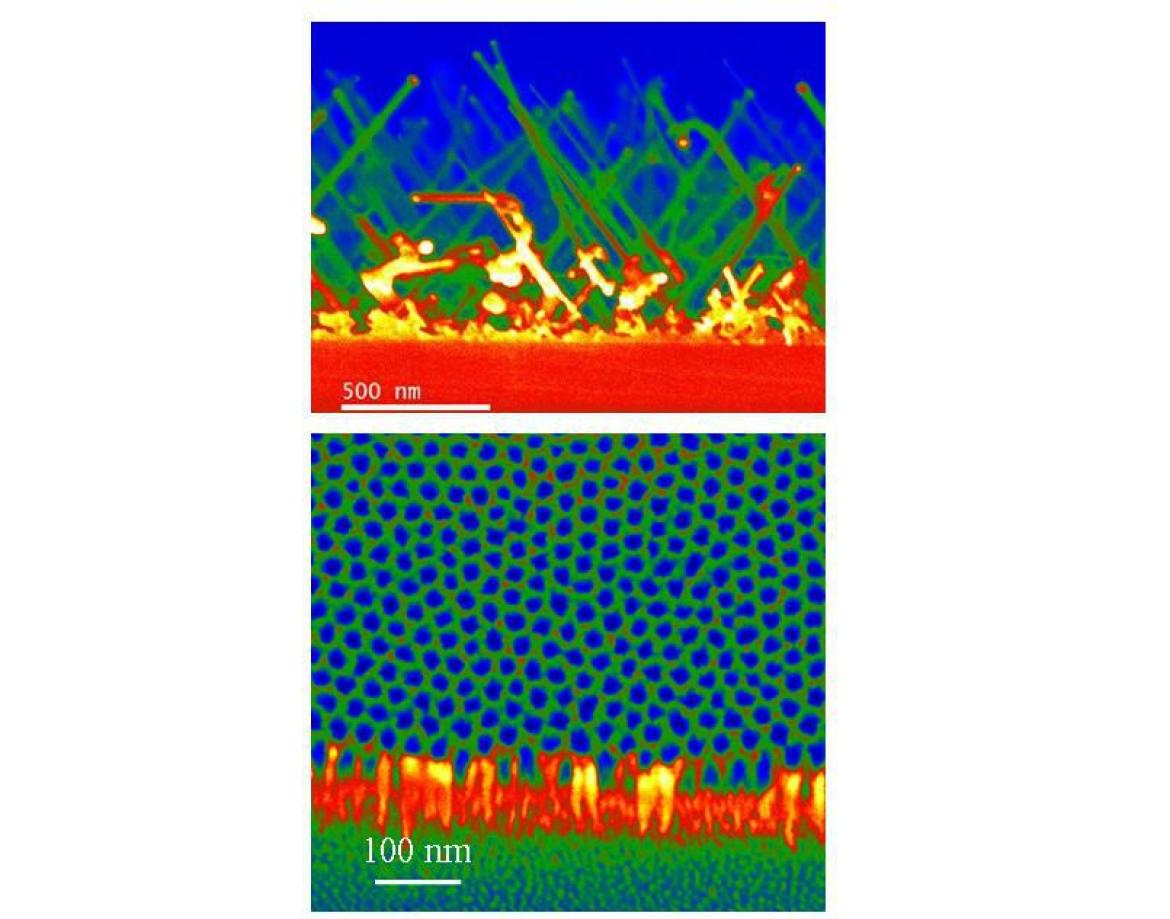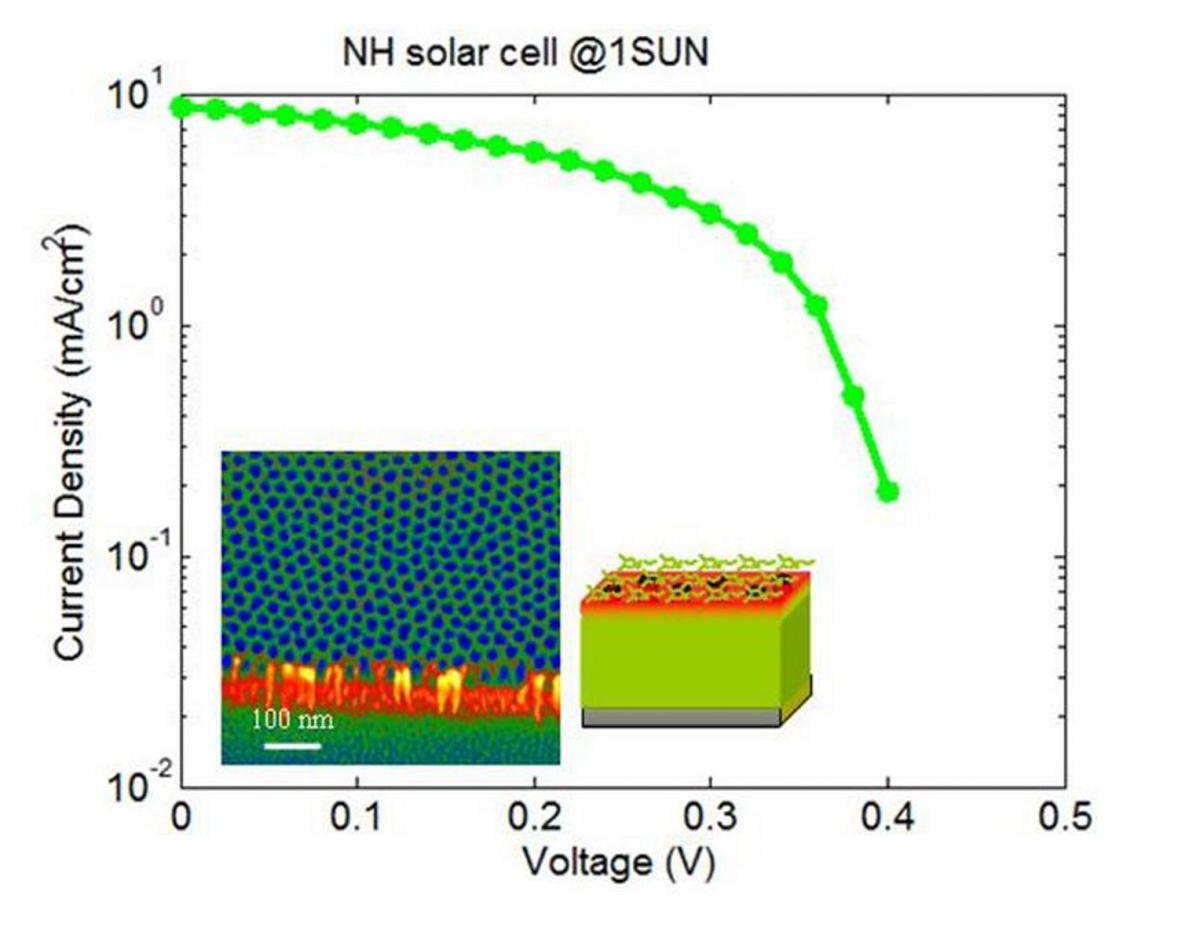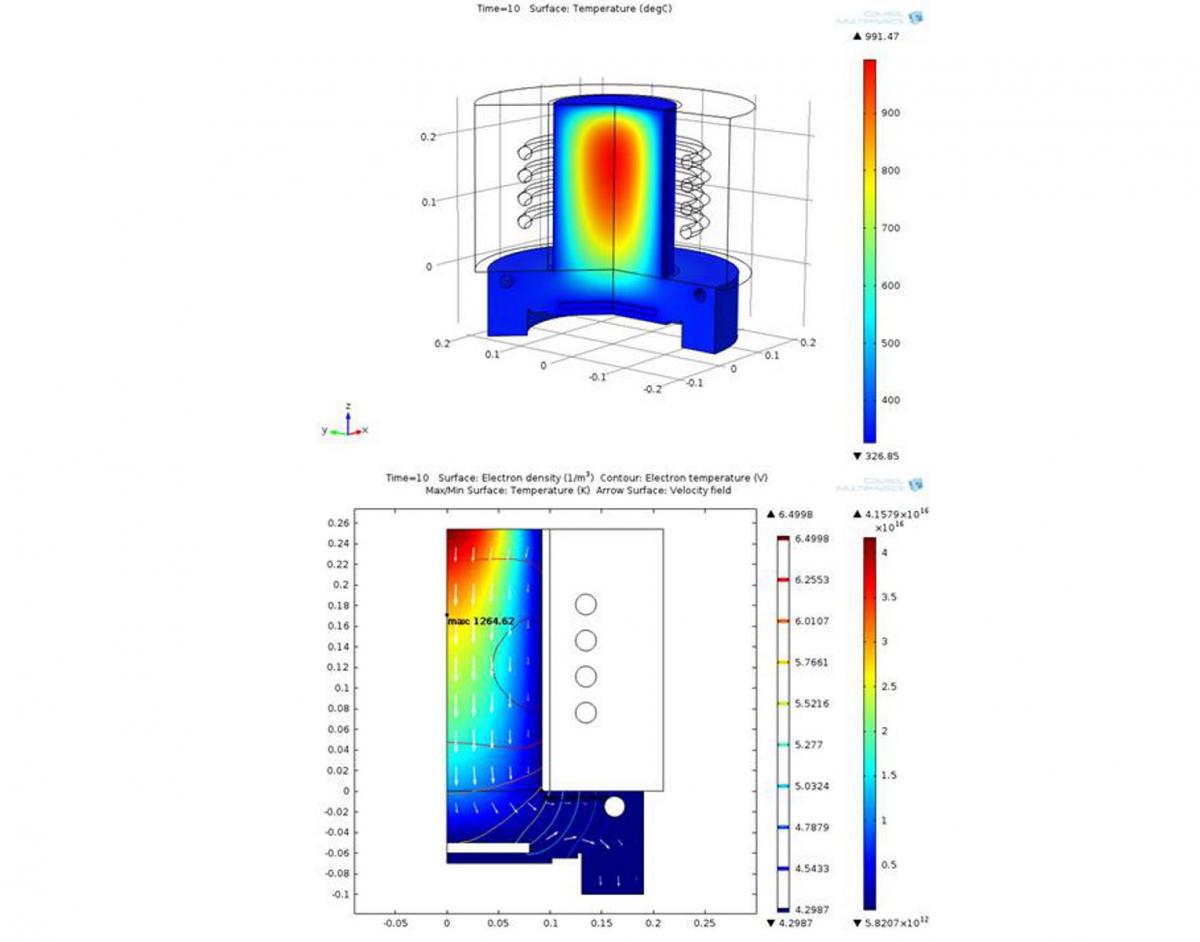
The activity concerns the synthesis, fabrication and characterization of materials and solar cells based on innovative structures and advanced processes. New three dimensional architectures are chosen because they allow to improve the photoconversion efficiency of Si by increasing the light absorption or by decoupling the photons path from the photogenerated carriers collection. Si nanowires deposited in a plasma-based Chemical Vapor Deposition (CVD) system, by vapor-liquid-solid method catalysed through metallic nanodots, are integrated in the emitter of the cell as light trapping layer.

In addition to the most popular 3D architectures, such as the wires, the potential of other innovative geometries like Si Nanoholes (NH) are exploited. These have recently been proved as a promising alternative to the positive counterparts, thanks to their better mechanical robustness during process integration and to their good optical match with visible light. As a main enabling technology for the synthesis of the Si NHs the nanolithography based on self-assembling of diblock copolymers is used.

Another important technology developed in the last years and exploited in the present activity is the monolayer doping for the formation of ultra-thin and conformal silicon junctions. The research topics relate to various aspects of the formation of a solar cell: from the 3D structures synthesis to the junction formation process, to the structural and electro-optical characterization, and the devices are fabricated in-house starting from the Si substrate up to the complete device. The activity is complemented by the simulation of the advanced processes applied for the synthesis of the nanostructures. In particular, the simulation of the plasma condition in the equipment used for the growth processes aids the understanding and control of the synthesis of the positive 3D structures. Dopant atoms transfer from the molecular systems mechanism is also modeled and impurity profiles are simulated by varying the process conditions.

Another important focus is on the study of the materials synthesized by plasma based CVD. The plasma technology is particularly appreciated for its compatibility with device production lines and its flexibility in terms of throughput. We exploit the capabilities of plasma to produce advanced materials, such as Si based and C based materials, optionally doped with P or B, like amorphous Si, SiC and oxynitrides/oxycarbide SiOxNyCz, for several applications in photovoltaics.
Current collaborations on the Si NWs and NHs solar cells activity (R. Puglisi):
(1) Physics Department of Paderborn University (Germany)
(2) Chemistry Department of the University of Catania
(3) Chemistry Department of the University of Messina
Contact person: Rosaria A. Puglisi
Selected pubblications:
- "Silicon Nanowires Obtained by Low Temperature Plasma-Based Chemical Vapor Deposition", R. A. Puglisi*, G. Mannino, S. Scalese, A. La Magna and V. Privitera, MRS Proceedings, Vol. 1408 (2012) pag. 139-144.
- C. Garozzo, C. Bongiorno, A. La Magna, R. A. Puglisi*, Pattern transfer of nanomasks based on diblock copolymers self-assembling through Reactive Ion Etching, ECS J. Solid State Sci. Technol. 2012, Vol. 1, Issue 3, Pages Q52-Q56.
- “Radial junctions formed by conformal chemical doping for innovative hole-based solar cells”, C. Garozzo, F. Giannazzo, M. Italia, A. La Magna, V. Privitera, R.A. Puglisi*, Materials Science and Engineering B,178 (2013) 686– 690.
- "Nanofabrication processes for innovative nano-hole based solar cells", Cristina Garozzo, Corrado Bongiorno, Salvatore Di Franco, Markus Italia, Antonino La Magna, Silvia Scalese, Paolo Maria Sberna and R. A. Puglisi*, Physica Status Solidi A, 210, No. 8, 1564–1570 (2013).
- "Competition between uncatalyzed and catalyzed growth during the plasma synthesis of Si nanowires and its role on their optical properties", C. Garozzo, A. La Magna, G. Mannino, V. Privitera, S. Scalese, P. M. Sberna, F. Simone, R. A. Puglisi*, J. Appl. Phys. 113, 214313 (2013).
- “Molecular Doping applied to Si Nanowires array based Solar Cells”, Rosaria A. Puglisi,* Cristina Garozzo, Corrado Bongiorno, Salvatore Di Franco, Markus Italia, Giovanni Mannino, Silvia Scalese, and Antonino La Magna, Solar Energy Materials and Solar Cells (2015), 132, pp. 118-122.
- “Towards Ordered Silicon Nanostructures through Self-Assembling Mechanisms and Processes”, R. A. Puglisi*, Review Article, Journal of Nanomaterials, Volume 2015 (2015), Article ID 586458, 20 pages.


